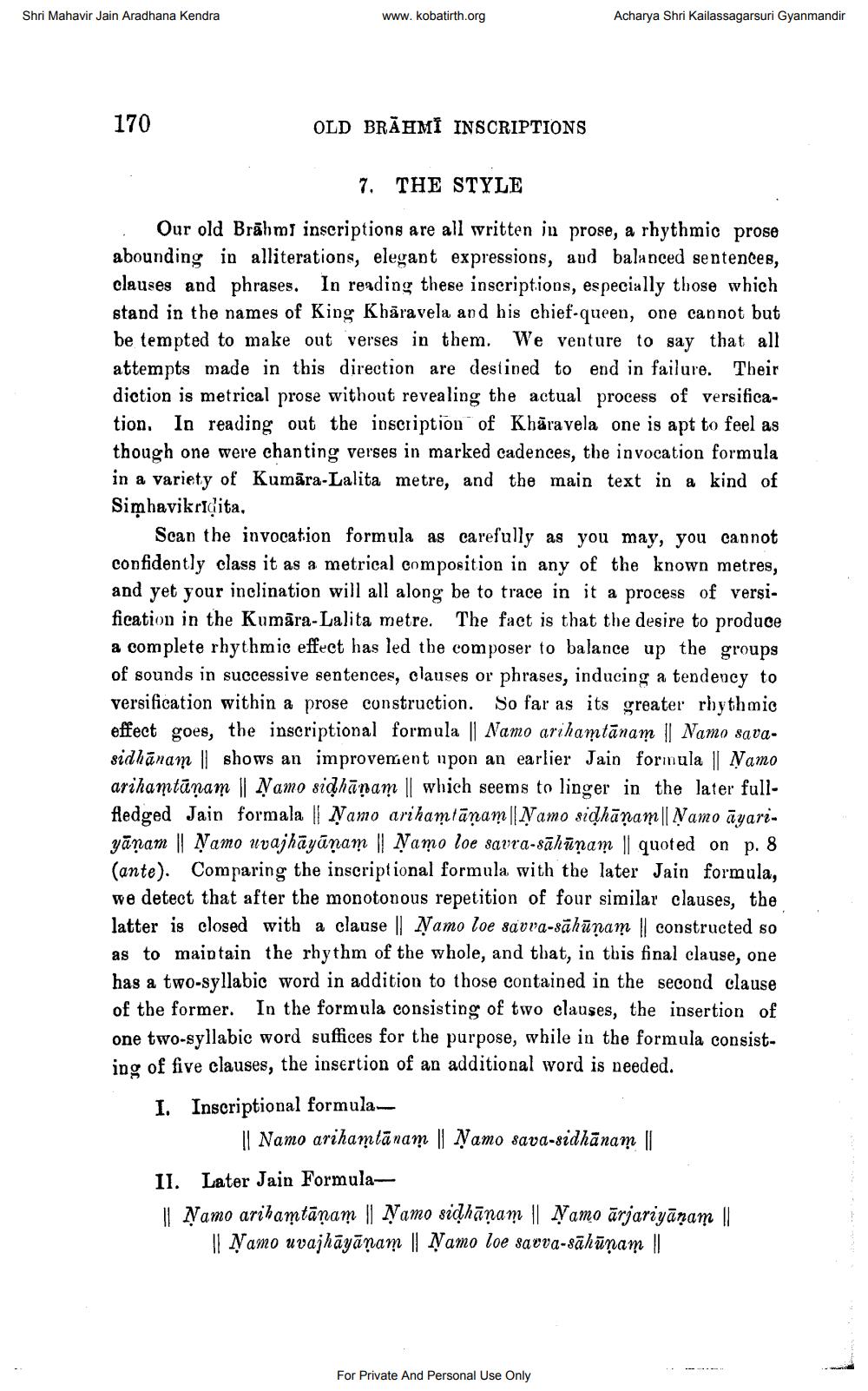________________
Shri Mahavir Jain Aradhana Kendra
www.kobatirth.org
Acharya Shri Kailassagarsuri Gyanmandir
170
OLD BRAHMI INSCRIPTIONS
7. THE STYLE
Our old Brāhmi inscriptions are all written in prose, a rhythmic prose abounding in alliterations, elegant expressions, and balanced sentences, clauses and phrases. In reading these inscriptions, especially those which stand in the names of King Khāravela and his chief-queen, one cannot but be tempted to make out verses in them. We venture to say that all attempts made in this direction are destined to end in failure. Their diction is metrical prose without revealing the actual process of versification. In reading out the inscription of Khāravela one is apt to feel as though one were chanting verses in marked cadences, the invocation formula in a variety of Kumāra-Lalita metre, and the main text in a kind of Simhavikridita,
Scan the invocation formula as carefully as you may, you cannot confidently class it as a metrical composition in any of the known metres, and yet your inclination will all along be to trace in it a process of versification in the Kumāra-Lalita metre. The fact is that the desire to produce a complete rhythmic effect has led the composer to balance up the groups of sounds in successive sentences, clauses or phrases, inducing a tendency to versification within a prose construction. So far as its greater rhythmic effect goes, the inscriptional formula || Namo ari hamtānam || Namo savasidhānam || shows an improvenient upon an earlier Jain formula || Ņamo arihamtūnam || Namo sidhanam || which seems to linger in the later fullfledged Jain formala || Namo ari hamtānam | Namo sidhānam || Namo āyari. yāṇam || Namo uvajhāyānam || Ņamo loe savra-sāhūņam || quoted on p. 8 (ante). Comparing the inscriptional formula with the later Jain formula, we detect that after the monotonous repetition of four similar clauses, the latter is closed with a clause || Ņamo loe savva-sāhūnam || constructed so as to maintain the rhythm of the whole, and that, in this final clause, one has a two-syllabic word in addition to those contained in the second clause of the former. In the formula consisting of two clauses, the insertion of one two-syllabic word suffices for the purpose, while in the formula consisting of five clauses, the insertion of an additional word is needed.
1. Inscriptional formula
|| Namo arihamtānam || Ņamo sava-sidhānam ||
11. Later Jain Formula || Ņamo arihamtāṇam || Ņamo siờhāņam || Namo ārjariyānam ||
Il Ņamo uvajhāyānam || Ņamo loe savva-sāhūņam ||
For Private And Personal Use Only




